FILMED March 1968
Three months after I wrapped GIRL IN THE NIGHT on IRONSIDE and after a stopover at Paramount to direct an episode of MANNIX, I returned to Universal to guide Ironside as he solved another case.
An unusual billboard! By that time most series had multiple stars, but the only star heralded on the IRONSIDE billboard was Raymond Burr!
The script was RETURN OF THE HERO, a title I now find with interesting implications. Protagonists in television in the 60’s and into the early 70’s tended to be ‘heroes’. I had already directed A HERO FOR OUR TIMES (SUSPENSE THEATRE), THE HERO (12 O’CLOCK HIGH) and in the very near future would direct BULLET FOR A HERO (DAN AUGUST) and END OF A HERO (THE FBI). I’ll continue this discussion in my next post.
Raymond Burr informed me on the first day of filming that he would absolutely have to be finished early on the 5th day because he was scheduled to leave for some promotional tour. I checked the schedule, saw that on that day he would be involved in 2 sequences totaling less than 2 pages and scheduled for filming on the backlot first thing in the morning. I saw no problem.
The set for Rutledge’s home was familiar to me. I had photographed it 3 months earlier in GIRL IN THE NIGHT.
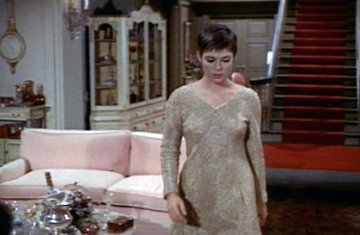
It was a standing set at Universal from one of their feature films, but it had been changed …
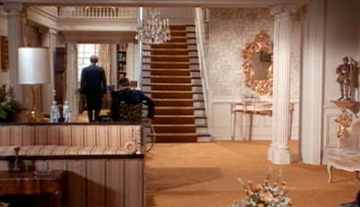
… probably for another feature film or possibly a film for television. Major alterations like that would never be made for an episode in a series. As you can see the stairway remained the same, although the handrail was repainted.
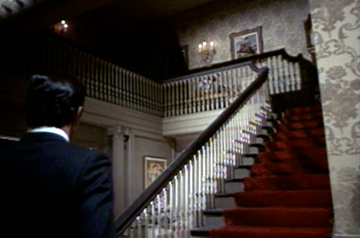
But the basic outline of the room remained constant ,,,
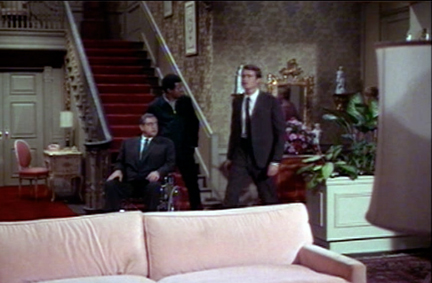
… new carpet was laid …
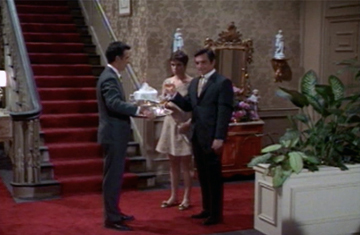
…and of course all of the set dressing was redone.
No, we didn’t go on location to San Francisco for that shot. We just ran a San Francisco cable car past our Alexander Hotel, thus creating San Francisco on Universal’s backlot, although our street was very flat and the cable cars in SF were for the steep hills. That was the first of the two sequences in which Ironside appeared scheduled for our 5th day .
That was the first and last time I worked with two of the paratroopers, Ron Hayes (Sergeant) and Chuck Wood (Mace). It was also the first time I worked with Ned Romero (Kali) but he and I would work together another six times – 5 times when he was a regular on DAN AUGUST and finally when Ned had the required amount of Indian blood to play one of the INDIANS on LOU GRANT. (I’m still sad about THE WARRIOR problem on THE WALTONS.)
The Judge’s house on the backlot was the second of Raymond Burr’s 2 scenes on the 5th day. I finished with him long before the lunch break, and he was released. But he was still around when we finished our backlot work and moved to a soundstage. He checked with me to be sure that he wouldn’t be still be needed. I had the strange feeling he was disappointed at the way things had worked out rather than appreciative.
The dark-haired detective was Leo Matranga, two decades earlier one of my classmates at the Pasadena Playhouse. Do you know Leo was one of only two of my classmates that I ever directed. Oh I directed several alumni from the Playhouse (Earl Holliman, Carolyn Jones, Victor Jory, Dabbs Greer, Meg Wylie and of course, Raymond Burr) but they had not been classmates. That’s just a comment on the number of aspirants in the profession who disappear without surfacing.
RETURN OF THE HERO was the first and only time I worked with Gavin Macleod (Gerber, the doorman), a very accomplished actor. He came to Hollywood from Broadway in 1956 at the age of 25. He could be cast in a wide range of roles, but probably spent most of his time playing heavies. In the ensuing 12 years he established himself as a highly respected young character actor, but he still had not achieved the rank of being billed as a Guest Star in the opening billboards. Two years later that would change with his break through role on THE MARY TYLER MORE SHOW. After a 7-year run there he immediately signed on for a 10-year cruise as the Captain of THE LOVE BOAT.
Two days before we began filming on March 1, revised script for a 4½ page scene involving Gerber was issued. (I don’t have the original script to know what changes had been made.)
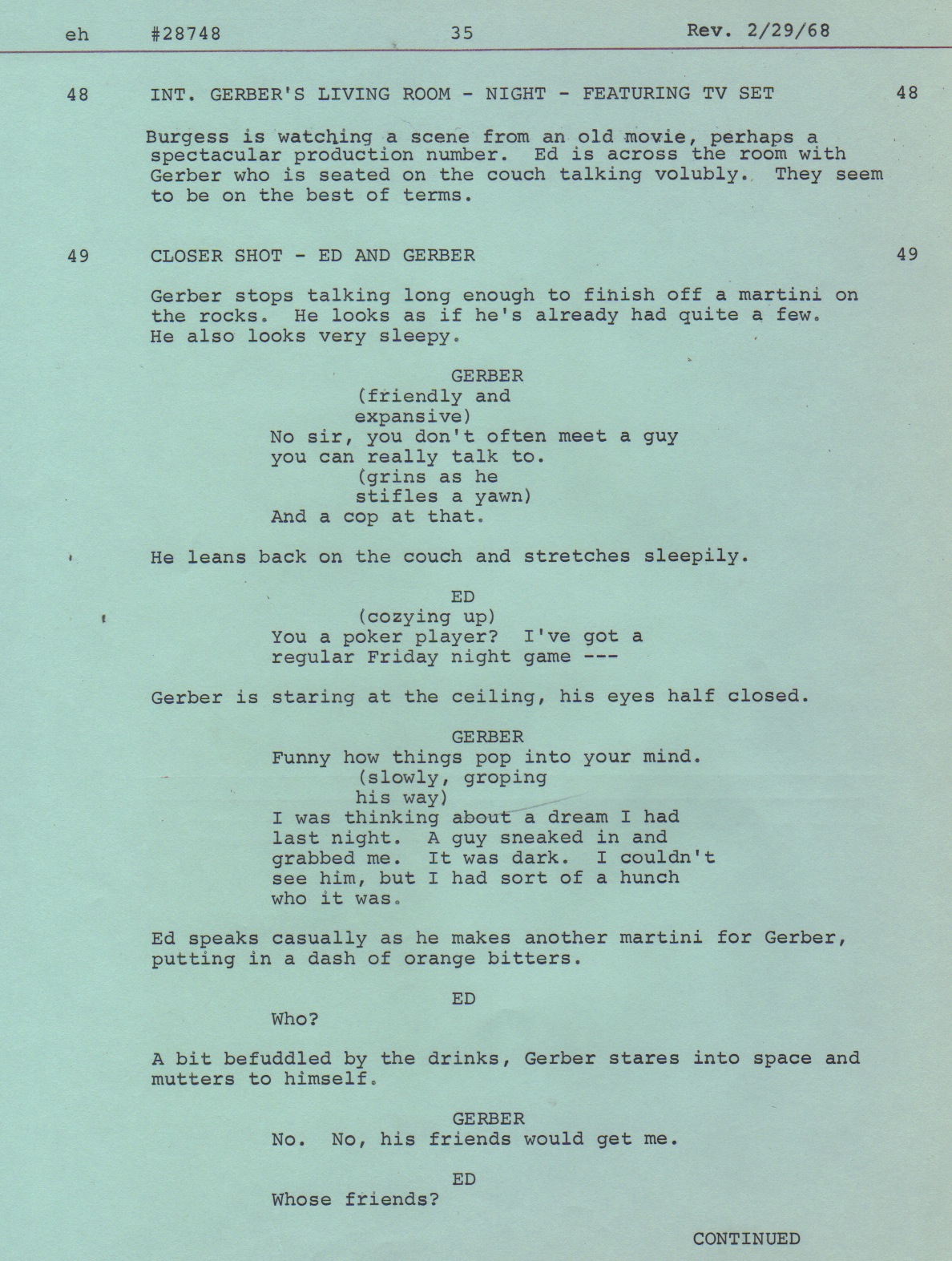
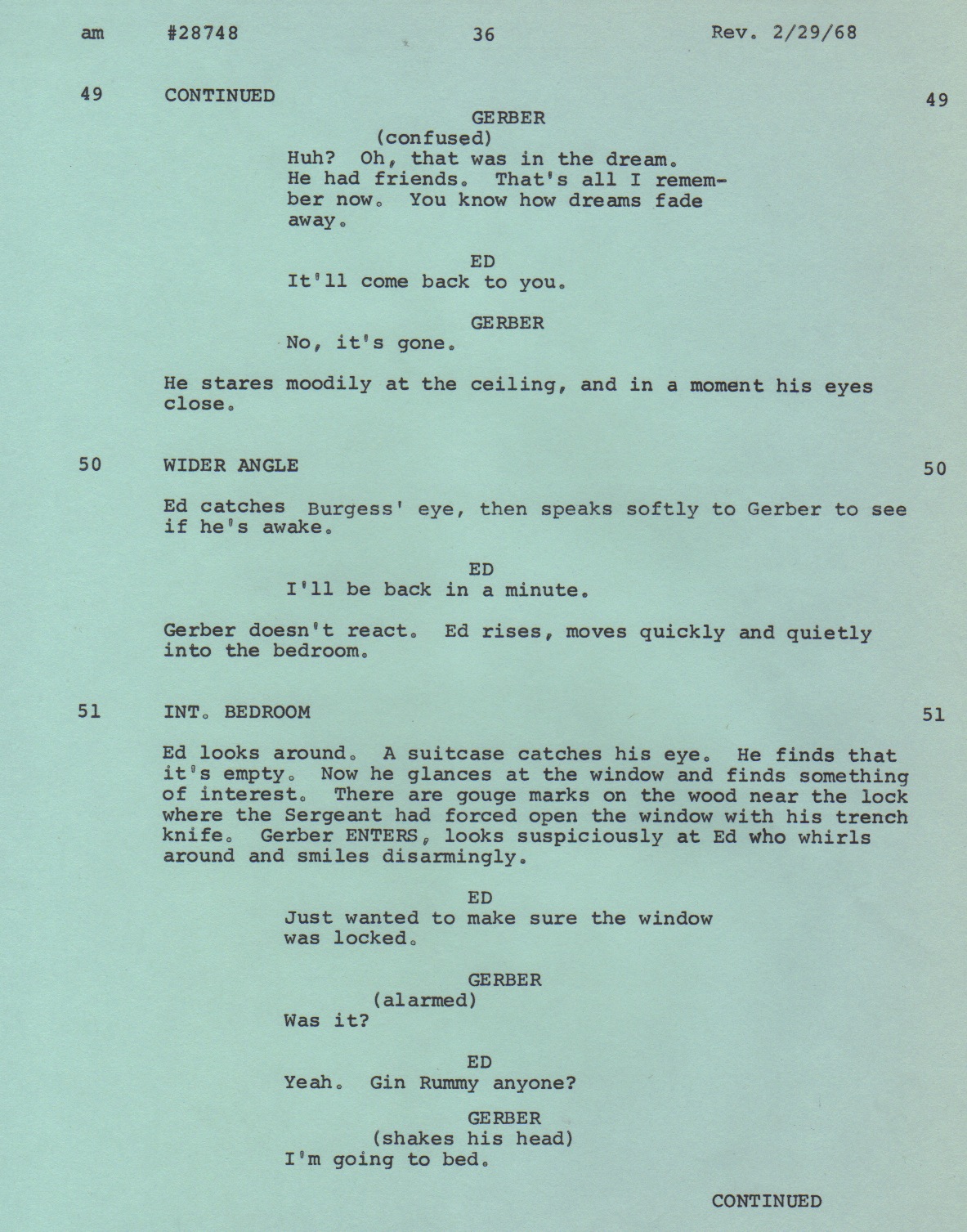
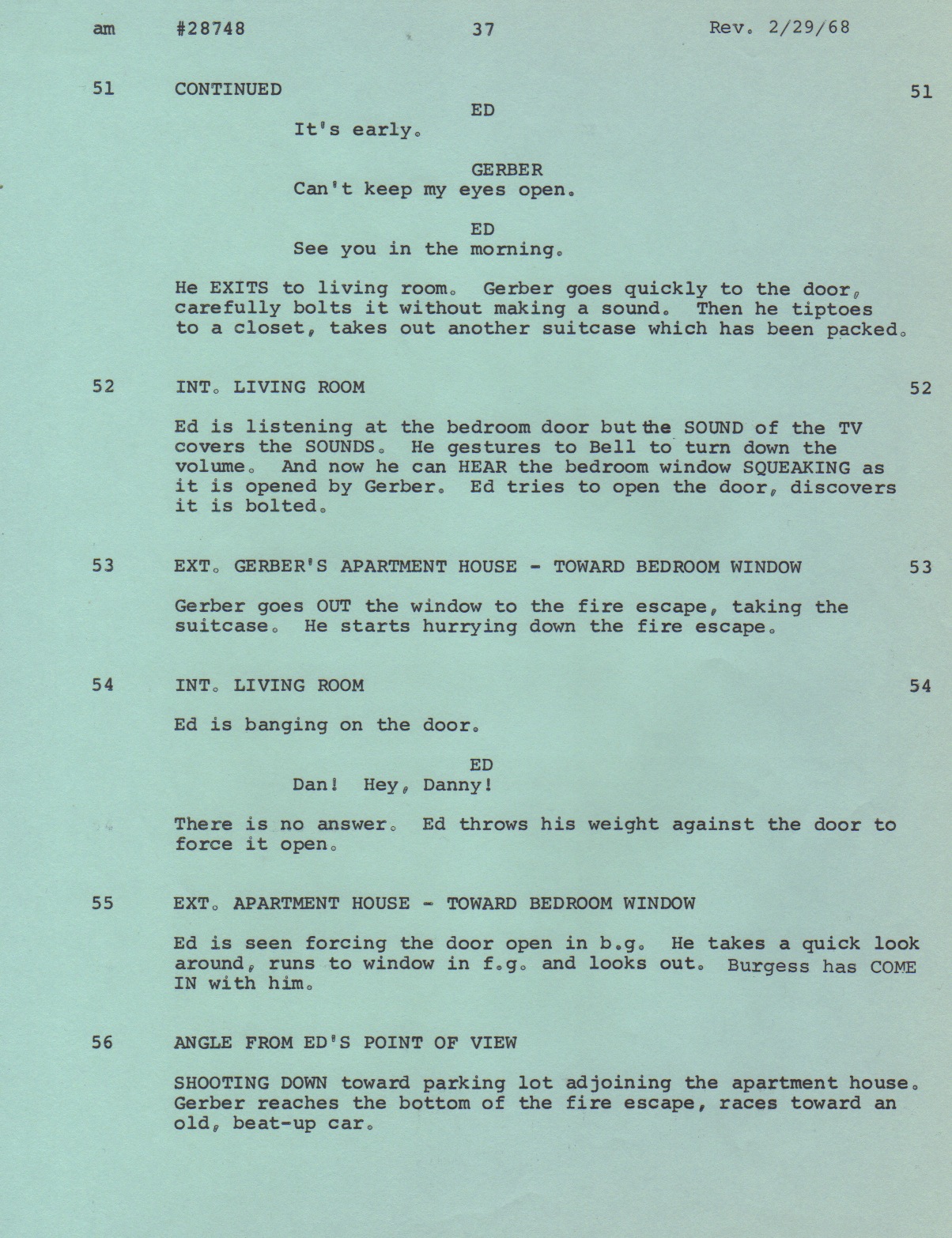
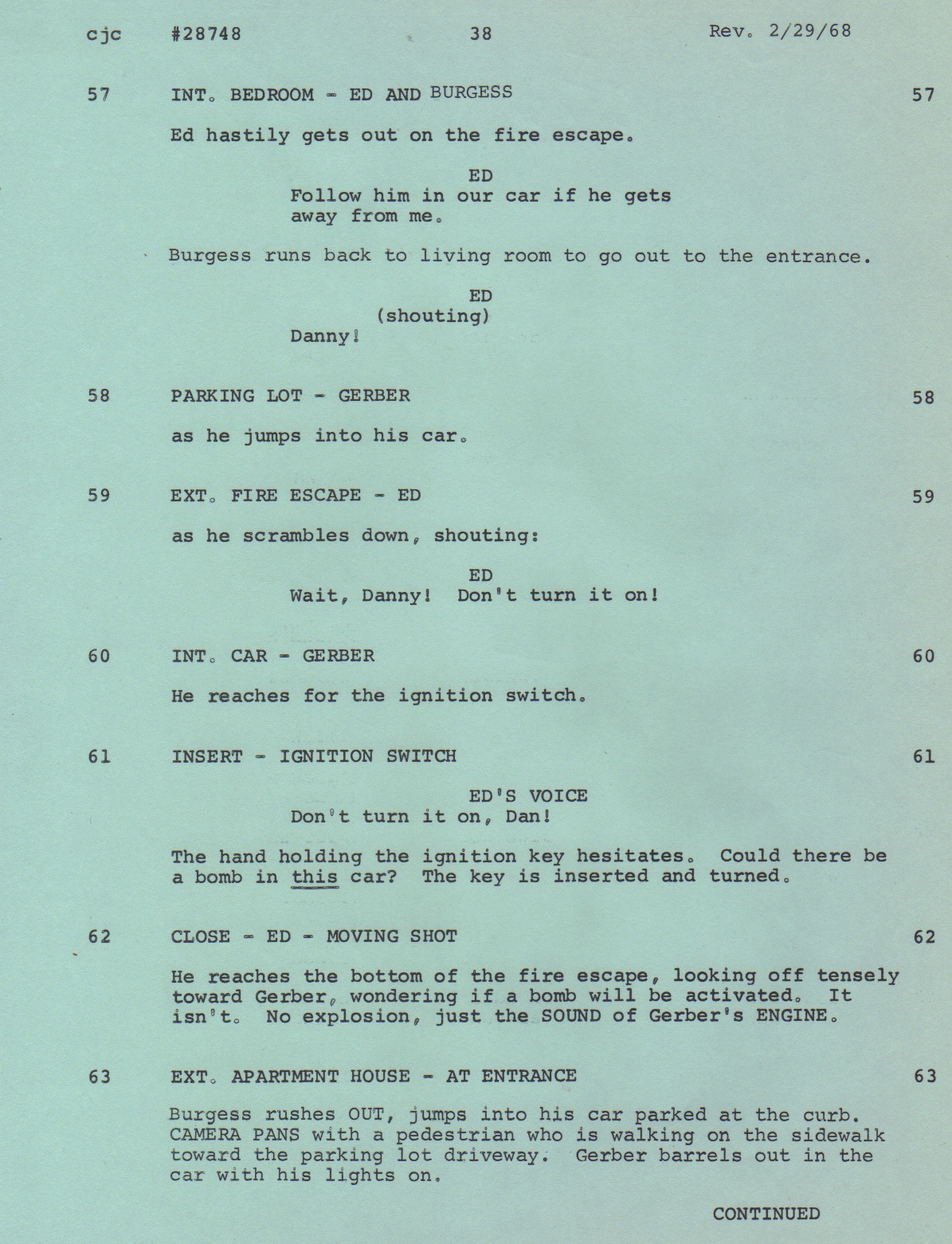
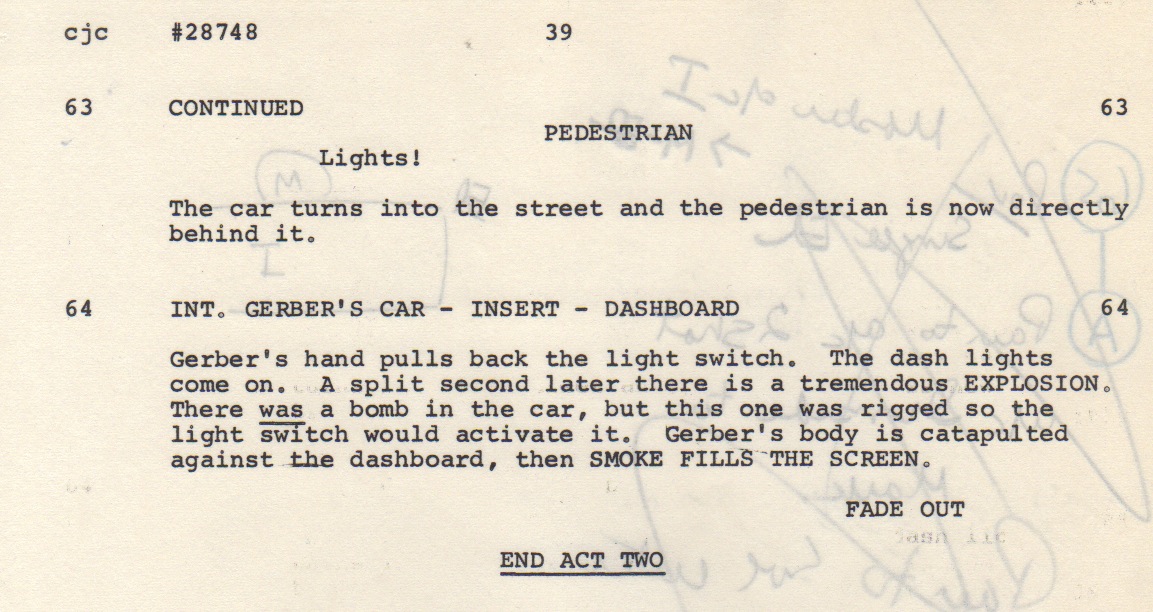
A one-page plus of the sequence was scheduled for the backlot on the 5th day; the balance of the sequence was to be filmed on a soundstage on the 6th and final day. By the time we got through our 3rd day of filming, it was obvious that by including the sequence, the film could not be completed on the 6th day, plus it would make the film long, requiring drastic cuts. The sequence was again revised — drastically!
We killed Gerber, but didn’t harm Gavin MacLeod. That was a photo double in the explosion.
The garage sequence was filmed day for night. Used judiciously day for night filming can be effective, but that was an example of a sequence that suffered by its use. Filming night for night the sharp glare of the automobile headlights would have provided a film noir look rather than the murky dirty film look of the scene as shot.
My records show that we had a photo double for Rutledge. My reaction? It was an awfully good photo double.
I had a problem with Ironside’s questioning the two paratroopers in the County Jail Visiting Room. They weren’t prisoners. They weren’t under arrest. But you know what? I knew it was expedient, and fighting it just didn’t seem worth the battle
RETURN OF THE HERO was the first time I worked with director of photography, William Margulies. I liked him, and six years later we would work together again on THE FAMILY KOVACK, a movie-of-the-week/pilot for PLAYBOY PRODUCTIONS. He was another but older version of cameramen William Spencer, Jerry Finnerman, Harkness Smith, Ted Voigtlander. He started as an assistant cameraman in 1929 at the age of 23, became a camera operator 10 years later, and with the coming of television became a director of photography. And like them he brought to his work those wonderful photography techniques of what I sometimes think may be a lost art.
It was winter of 1974, some of THE FAMILY KOVACK filmed on location in Chicago, and one sequence is etched indelibly in my consciousness. Two brothers played by James Sloyan and Andy Robinson were having a serious conversation about a family problem as they walked along the shore of Lake Michigan. The day in January when we scouted was cold by sunny, and for my establishing shot I selected a high wide angle of the shore with the downtown Chicago skyline as background. It was incredibly stunning. My intent was then to move the camera down to the shore and do a dolly back two-shot of the boys as they walked and talked. Then came the day to film, and it was more than cold. It was frigid! Below zero! And windy! But I was determined. We got the establishing shot, but the weather defeated us. There was no way we could film the conversation down by the shore. Even wrapped in padded quilts the cameras wouldn’t function and the wind made audio recording impossible. But we had our establishing shot! We then moved the whole endeavor up to the Park near the lake where we were more shielded from the wind, and by filming very tight close-ups of the walking boys, we were able complete out sequence. The final result? It looked like the boys were having their conversation walking along the shore.
Beside the basic crew that we brought from Hollywood, we added local union men to our crew. The ones on the film crew told us that we must be crazy. They said even newsreel photographers didn’t go out and film on a day like we were experiencing.
The journey continues



Once again, thanks, Ralph, for all the great background info that only an insider such as yourself can know. It’s a pleasure to read. For the record, I was never an Ironside fan. Shows like that worked better in black and white (in my opinion), and for years too brightly lit dramatic series kept me from watching prime time television.
Raymond Burr’s own Perry Mason is more the classic for if nothing else that timeless black and white quality. It’s good to see Gavin McLeod mentioned in a positive light as something other than a comic actor. I’ve seen excellent straight dramatic work from in, and some of his early work on television he even sounds somewhat different,–though he looks like he was born bald,–LOL!
John B.
Couple of continuity issues in that last clip, Ralph! Was that an editor issue or a director issue? 🙂
I’m lost. I don’t know what issues you’re referring to.
Regarding continuity in the last video, Mark alternates between holding the newspaper with one hand or two.
Regarding Raymond Burr’s promotional tour, I have a good guess about that. He was the villain in the outrageous film “P.J.”, which starred George Peppard. IMDB says the movie’s New York City debut was on March 6, 1968. Maybe Burr had to be in NYC for the opening.
You should have been the script clerk. That was their job to catch that!
I was fascinated by opening and closing credits, and would make them up for the plays where I acted.
Raymond Burr was the sole actor to get screen credit at the start of Ironside–but only in the first season. The actors playing Ed Brown, Mark Sanger and Eve Whitfield were relegated to the closing credits (this lower billed than the guest stars). For all subsequent seasons, they were moved to thopening credits. (Gene Lyons as Commissioner Dennis Randall, who had only one or two scenes in each episode, was given “Co-Starring” billing in the end. )
One BIG gripe that I have about Universal shows in the ’60s-’70s was that SO many actors in good roles were underbilled, stuck in the end credits, sometimes very far down; sometimes not credited at all. Out of sight, out of mind, paid pocket change (although many of them might have been contract players who got so much per week, regardless). But it bugged me a whole lot to see a great performance in an important role squeezed in at the back end, in itty-bitty type that might be sqeezed down to nothing by a promo running instead.
The billboard you mention was used only for the first season. In all subsequent seasons, the three supporting actors were listedin the opening credits. I think this may have been. Universal’s way of telling the actors they were “just” contract players. This may have changed because Barbara Anderson won an Emmy as Best Supporting Actress in a Drama Series in 1968.